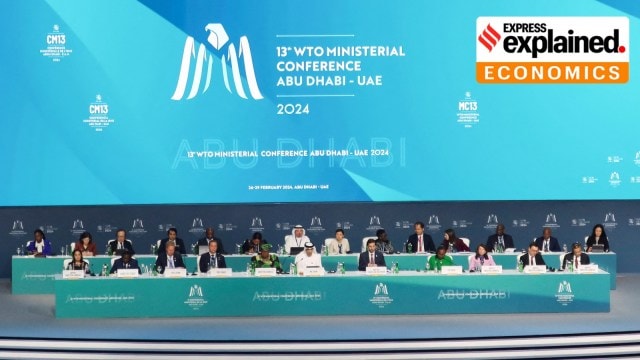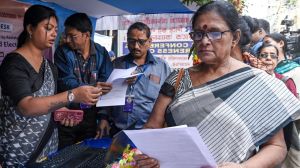Thailand is reported to have replaced its Ambassador to the World Trade Organisation (WTO) after India formally registered a protest over her comments on India’s PSH (Public Stockholding) programme, PTI reported on Friday (March 1).
Thai Ambassador Pimchanok Vonkorpon Pitfield had targeted India’s rice procurement programme recently. She said that its Public Distribution System (PDS), under which the government procures essential food items from producers and sells them to the public at low rates, is not for the people but for “capturing” the export market.

After India, Thailand is the second largest rice exporter in the world. However, India has put temporary restrictions on rice exports to arrest domestic prices.
Tensions between India and Thailand rose to such an extent that Indian negotiators at the 13th Ministerial Conference of WTO, held from 26 to 29 February 2024 in Abu Dhabi, UAE, are learnt to have refused to participate in some deliberations in groups where the Thai representative was present.
PTI cited a senior government official as stating that the language and behaviour of the Thai ambassador were “not in good taste”.
What were Thailand’s concerns?
Thailand is a member of the 20-nation Cairns Group, which has time and again questioned India’s PSH programme at WTO. It has argued that the programme is “highly subsidised” and India’s farm support is “distorting” global food prices and “hurting” the food security of other countries.
Trade distortion is a situation where prices and production are higher or lower than levels that would usually exist in a competitive market. As per WTO, nearly all domestic support measures are considered to distort such trade, but they are permitted to a certain limit called the ‘de minimis’ limit.
Story continues below this ad
Under the provisions of the WTO’s Agreement on Agriculture (AoA), the aggregate value of the product-specific support should not exceed 5% of the total value of production of the agricultural product in question. In the case of developing countries such as India, the de minimis ceiling is 10%.
India has breached the de minimis limit in the case of rice. This has angered other exporters such as Thailand, as they are finding it difficult to compete with Indian rice and losing the global export market share to India.
The Cairns group comprises Argentina, Australia, Brazil, Canada, Chile, Colombia, Costa Rica, Guatemala, Indonesia, Malaysia, New Zealand, Pakistan, Paraguay, Peru, Philippines, South Africa, Thailand, Ukraine, Uruguay, and Vietnam. It has been lobbying for agricultural trade liberalisation.
Trade experts say that the grouping is trying to get India to dismantle or reduce the scope of the Minimum Support Price (MSP) scheme. Through the scheme, the government gives an assured price to farmers for certain major crops to ensure price stability and secure farmers’ income.
Story continues below this ad
Why are India’s rice subsidies being questioned?
The WTO norms say that the support given should be within the 10% de minimis limit. India informed the WTO that the value of its rice production in 2019-20 was $46.07 billion while it gave subsidies worth $6.31 billion or 13.7%, as against the permitted 10%.
However, India has questioned the way subsidies are calculated at the WTO, saying it is calculated at a fixed and outdated 1986-88 price, which overestimates the subsidy. India is seeking to change it at the WTO negotiations on agriculture.
What is India’s argument and demand at the WTO?
The Cairns Group is also attacking the ‘peace clause’, triggered after India breached the de minimis limit.
The interim peace clause was put in place in 2013 under the Bali Agreement to protect developing countries from being challenged for breach of subsidy levels. However, it comes with onerous conditions, including a host of notification requirements, making it difficult to use.
Story continues below this ad
Therefore, India and a group of developing nations are seeking a permanent solution for public stockholding for food grains that will give India better flexibility in providing farm support. India has been arguing that the subsidy that it provides is far less than what the US and EU give.
The Indian government’s subsidy to farmers comes in at $300 per farmer, compared to $40,000 per farmer in the US. However, the 13th Ministerial Conference of WTO ended without any decision on a permanent solution for public stockholding of food.
Why are Indian farmers asking the government to leave the WTO?
Since WTO norms restrict the government’s ability to provide higher farm support, farmers during the ongoing protests around New Delhi have demanded the agriculture sector be taken out of the WTO agreement.
Calling the WTO policies “anti-farmer”, the protesters also demanded legal guarantees for MSP, debt waiver, the implementation of Swaminathan Commission recommendations on issues related to agriculture, and pensions for farmers.
Story continues below this ad
However, experts pointed out that this approach could pose problems and restrict India and other developing nations from disciplining the subsidies being given by the developed world.








































